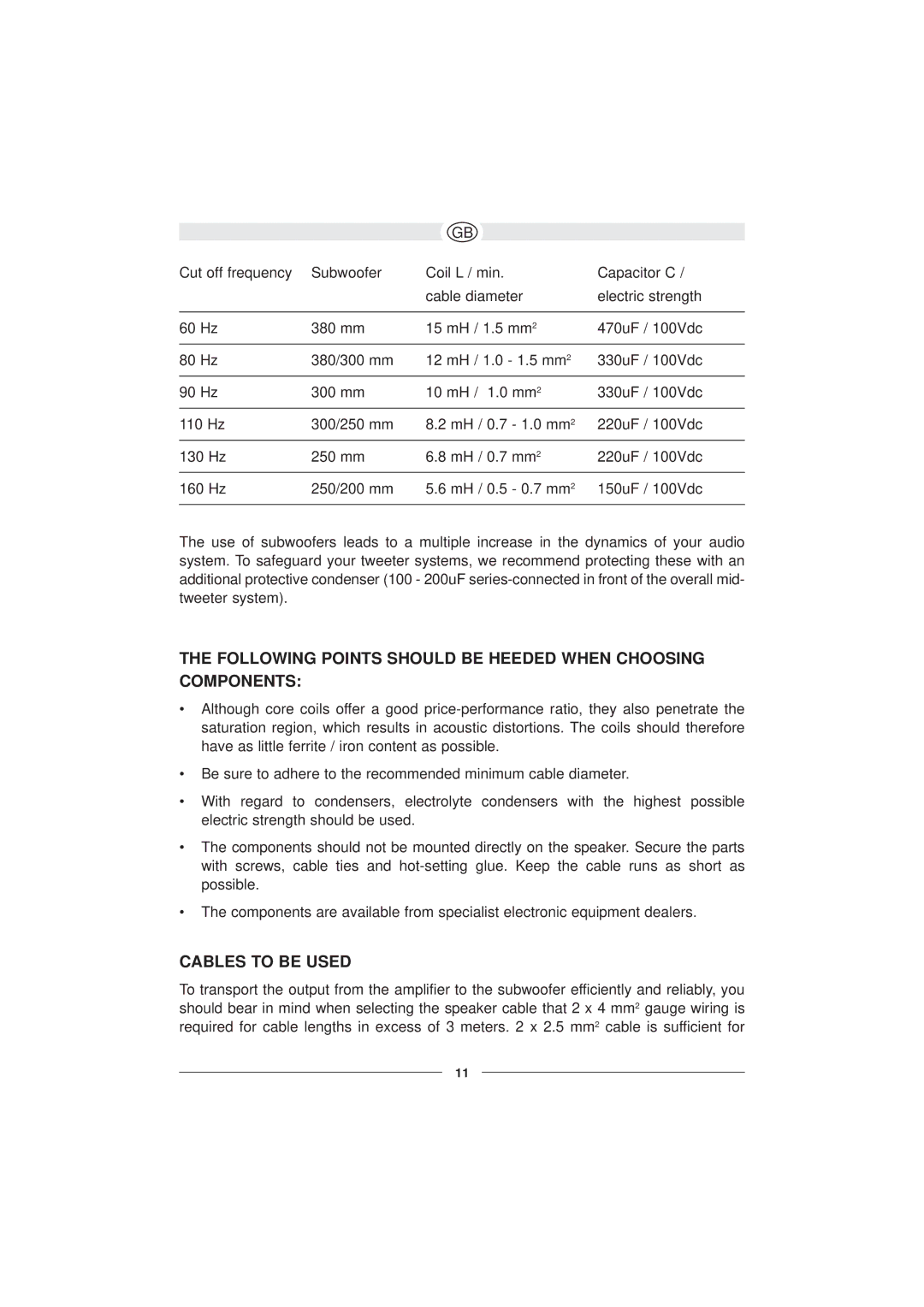
GB
Cut off frequency | Subwoofer | Coil L / min. | Capacitor C / |
|
| cable diameter | electric strength |
|
|
|
|
60 Hz | 380 mm | 15 mH / 1.5 mm2 | 470uF / 100Vdc |
|
|
|
|
80 Hz | 380/300 mm | 12 mH / 1.0 - 1.5 mm2 | 330uF / 100Vdc |
|
|
|
|
90 Hz | 300 mm | 10 mH / 1.0 mm2 | 330uF / 100Vdc |
|
|
|
|
110 Hz | 300/250 mm | 8.2 mH / 0.7 - 1.0 mm2 | 220uF / 100Vdc |
|
|
|
|
130 Hz | 250 mm | 6.8 mH / 0.7 mm2 | 220uF / 100Vdc |
|
|
|
|
160 Hz | 250/200 mm | 5.6 mH / 0.5 - 0.7 mm2 | 150uF / 100Vdc |
|
|
|
|
The use of subwoofers leads to a multiple increase in the dynamics of your audio system. To safeguard your tweeter systems, we recommend protecting these with an additional protective condenser (100 - 200uF
THE FOLLOWING POINTS SHOULD BE HEEDED WHEN CHOOSING COMPONENTS:
•Although core coils offer a good
•Be sure to adhere to the recommended minimum cable diameter.
•With regard to condensers, electrolyte condensers with the highest possible electric strength should be used.
•The components should not be mounted directly on the speaker. Secure the parts with screws, cable ties and
•The components are available from specialist electronic equipment dealers.
CABLES TO BE USED
To transport the output from the amplifier to the subwoofer efficiently and reliably, you should bear in mind when selecting the speaker cable that 2 x 4 mm2 gauge wiring is required for cable lengths in excess of 3 meters. 2 x 2.5 mm2 cable is sufficient for
11
